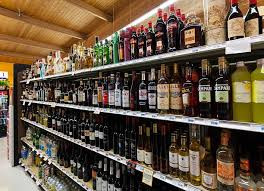IN Zimbabwe, around 80% of the traffic and trade is transported by road. Railway and air play a minor role in comparison, facilitating about 20% or less, of traffic and trade.
Due to its importance, policymakers and stakeholders should have a continual commitment to ensure that the country's road network is in good condition.
In 2021, the government declared the country's roads a state of disaster. This led to the Emergency Road Rehabilitation Programme, which resulted in thorough reconditioning and rebuilding of various roads within the country.
However, since the total road network is almost 97 000 kilometres, there are still several more roads, which will need to be attended to, as the years go by. Of the 97 000 kms, 18 481 km are paved (20,4% surfaced, 14% gravel), whilst 78 786 km are unpaved (65,6% earth roads).
Local dynamics and structures
The road density in Zimbabwe is about 0,23 km per square km. This is high compared with many developing countries. Only the Organisation for Economic Cooperation and Development (OECD) (the world’s richest) countries have a substantially higher road density than Zimbabwe.
Keep Reading
- Mavhunga puts DeMbare into Chibuku quarterfinals
- Bulls to charge into Zimbabwe gold stocks
- Ndiraya concerned as goals dry up
- Letters: How solar power is transforming African farms
The implication of this is that a relatively high proportion of the population has access to the road network.
The road network is also substantial relative to economic activity (Gross Domestic Product).
The Zimbabwe National Road Administration (Zinara) is responsible for collecting funds meant for road rehabilitation, which are pooled (collected) into the Road Fund. The revenue for the fund is generated through toll gate, fuel and vehicle licence fees.
After collection, the funds are then periodically disbursed to the following road authorities: the Department of Roads in the Ministry of Transport, responsible for trunk roads (which lead into neighbouring countries); urban councils, responsible for urban roads; plus the rural district councils and the District Development Fund, responsible for rural roads.
The government also subsidises roads as it pays out of its national purse (national budget) to sustain some of the roads, whose revenue (the roads) is known to be unable to meet the costs of funding them.
Such subsidy disbursements from government can be disbursed for any of the different roads, from trunk, or urban to rural roads.
Also, both urban and rural councils can use some of their own revenue apart from that received from Zinara, and the Ministry of Finance, to develop and maintain roads within their areas.
The private sector can also contribute towards road development, through Public Private Partnerships (PPPs), which are basically partnerships between private companies and the government.
However, PPPs in road construction are normally used in the development of busy roads, whose traffic can be monetised to generate revenue, to recover development costs, through toll gate fees.
Therefore, PPPs are usually common when it comes to the development of trunk roads, which link Zimbabwe to other countries, or primary roads, which link the major cities and towns within the country.
Trunk roads and some critical (highly important) primary roads are the responsibility of government, under the Department of Roads in the Ministry of Transport.
Primary, secondary and feeder roads are typically under the management of municipalities (urban or rural district councils). The Regional Trunk Road Network (RTRN) in Zimbabwe has a total of 3 174,9 km.
Much of it (RTRN) has been earmarked for rehabilitation, with some routes such as the Harare-Beitbridge road almost complete.
Challenges
Since an overwhelming majority of Zimbabwe’s transportation and trade are facilitated by roads, they (the roads) are subject to a greater level of degradation than in other regional countries, where railway plays a major role in transportation.
This means that for as long as the National Railways of Zimbabwe (NRZ) and the country's private railway operators are not taking up a sizeable portion of freight and passenger transportation. Most local roads will continue to cost more than the revenue, which they earn (through toll, fuel and vehicle licence fees).
In the United States, for example, railway transports as much as 40% of the country’s total freight volumes. That is one of the reasons why the United States has a viable and intact road network.
In neighbouring South Africa, railway's participation has also been a major reason why the roads there have been intact. Until recently, railway has moved between 25%-40% of total freight volumes in the country.
It is only in the past seven years that railway has been greatly losing its share to road freight as it now makes only 15% of total freight volumes transported.
With the demise of railway's share in transportation, South African roads can also be expected to begin to break down at a faster rate. What Zimbabwean stakeholders should pick from these examples is that in order to have the roads in the best shape possible, the domestic railway industry will need to be revived.
The freight logistics roadmap (strategy) of South Africa put it clearly that heavy trucks damage roads more than 100 times the damage caused by private vehicles. That also means that it would be in the good judgement of the country to install weigh bridges on major roads so that the roads are not subject to faster degradation due to overloaded freight vehicles.
If possible, the weigh bridges should automatically fine an overloaded vehicle so that revenue, which was supposed to go to government is not diverted by any corrupt officials manning the weigh bridges.
Ideally, the weigh bridges should be installed on trunk roads (highways), and some key primary and secondary roads. Fines paid by overloaded vehicles can then be used for the maintenance and development of roads.
Growing urbanisation also implies that some of the country's cities and towns now have greater populations than they were designed to handle. For instance, in 1980, Harare had a population of about 615 000 inhabitants, whilst the rate of vehicle ownership was very marginal (low).
Harare, as a province, now has about 2,4 million residents and the rate of vehicle ownership has skyrocketed, with about 1,5 million vehicles passing through it, daily, according to the Central Vehicle Registry (CVR). The growing population of vehicles means that the roads now need more maintenance than ever before.
To address the issue of an overpopulation of vehicles in the cities, quality public transport systems will need to be introduced so that more people can find public transport as an alternative to private vehicles.
This means that the current minivans (combis) will need to be gradually replaced by modern busses, trams, trains and other communal transport systems.
Also, new cities will continually need to be built, nearby existing ones or even in other remote locations, in order to disperse the population so that both roads and public services, such as water, education, healthcare, policing, sewage and waste management can be provided for in line with available capacities.
Although heavy vehicles damage roads much more than private vehicles. Weather actually destroys roads more than both heavy and private vehicles. This means that it will be wise to ensure that within capacity, the existing roads are utilised as much as possible, before weather naturally degrades them.
In that regard, Special Economic Zones (SEZs) can be set up along highways (regional or trunk roads) so that new cities can be built in areas where there is accessibility to wider domestic and regional trade.
This will lead to more intense use of the highways, although the rate should be within their capacity.
The increased revenue earned through toll fees, and the greater profits made by those businesses (situated in SEZs) due to their accessibility to regional trade can then be eventually channelled to the maintenance of the same highways.
Therefore, although roads should be used within their designed capacity, they should also be adequately utilised at a level where they can generate enough revenue to cover all or most of their management costs, which include; repairs, maintenance, return on investment made by developers (if they are private developers), and so forth.
Some sources indicate that Zimbabwe will need up to US$10 billion, if it is to replace and maintain its roads to a reasonable standard.
This estimation however, does not include paving all roads. Rather, it entails the maintenance of all roads in their existing state (with bitumen, gravel, or just as dust roads), of which most of the country's roads are already dust roads.
It is also essential to mention that having all roads paved might be an insurmountable task, since even the USA, China and South Africa, also have dust and gravel roads, which are used mostly in remote and rural areas. As a matter of fact, about 32% (more than 1,6 million km) of the total public road network in the USA (of about 6,5 million km) is unpaved.
As for South Africa, it has the tenth-largest road network in the world (750 000 km).
The network is made up of 158 000km paved roads and 592 000 km of either gravel or dust roads. As can be noted, much of South Africa's roads are not paved.
Thus, Zimbabwe need not try to pave all roads, as that may not be a feasible goal. However, the most critical roads will need to be paved so that they facilitate economically viable trade and social interaction without hindrance. That means that trunk roads (which link regional countries) and primary roads should be treated as a priority.
Advantages of a good road network
A good road network usually offers a competitive advantage to its country over other nations within its region. That means decisions to commit both domestic and foreign investments will be easier when the country in question has a viable road network.
This is because efficient roads imply that goods and people will be able to be transported more efficiently than in other regional countries with poorer road networks.
An efficient movement of people means that they will usually be in time for work (punctual). Good roads also mean that emergency services, such as the police or ambulances, will be able to swiftly respond to crises.
That also means that the road network upholds a country's health and crime management systems.
Such circumstances are suitable for attracting foreign investors and encouraging wealthy locals not to emigrate to other countries.
Additionally, rural and urban areas become seamlessly connected when there are reliable roads. Such will encourage more local and foreign citizens to set up more commercial activities in the villages.
Research on the economic potential of the rural areas would be accelerated, leading once more to greater investments. Social integration between rural and urban areas would be improved.
It would be easier for urban residents to send their children to rural schools and intermarry with village residents. All those are perfect conditions for wealth creation within a country.
In terms of freight, an efficient road network means that vehicle breakdowns and delays are less-likely to occur.
So, businesses can accelerate trade (buying of raw materials and selling of final goods) under such circumstances.
The reduced occurrences of breakdowns and delays also translates to lower costs of production, since additional costs to do with the breakdowns will not be encountered. Safety of freight and workers would also be guaranteed, unlike where roads are in a bad shape. In-turn insurance costs may be lower if accidents are less-likely due to the existence of intact road networks. Once more, such conditions will attract more domestic and foreign investment and higher economic activity.
Ultimately, a country with better roads, has set itself up for economic growth and better citizen well-being (welfare).
- Tutani is a political economy analyst. — tutanikevin@gmail.com





